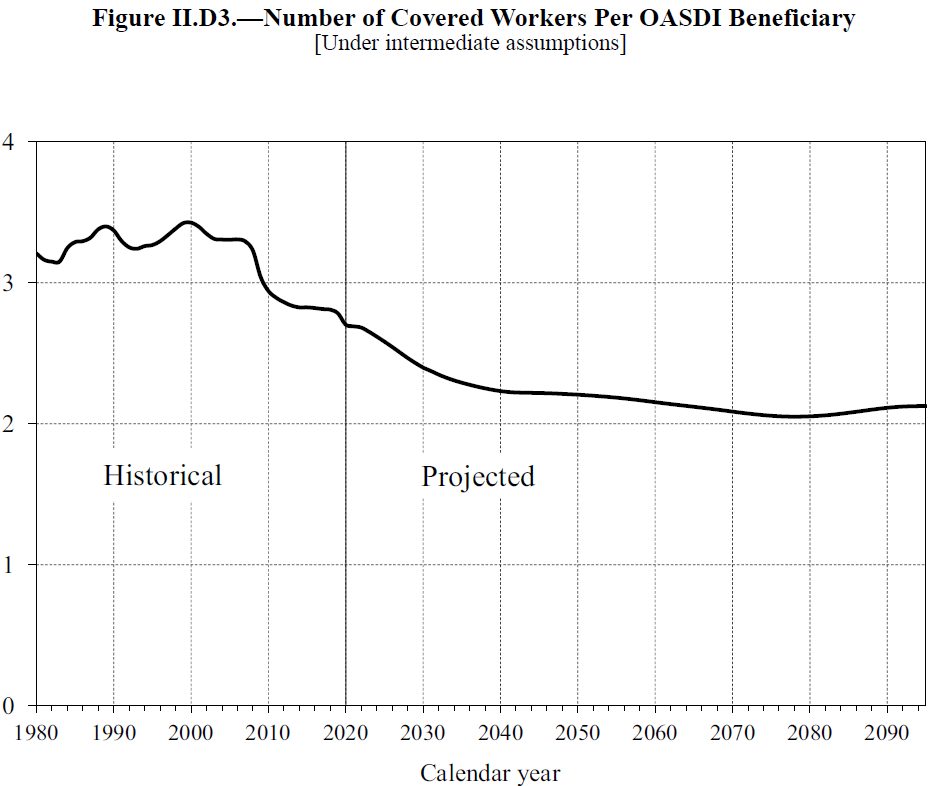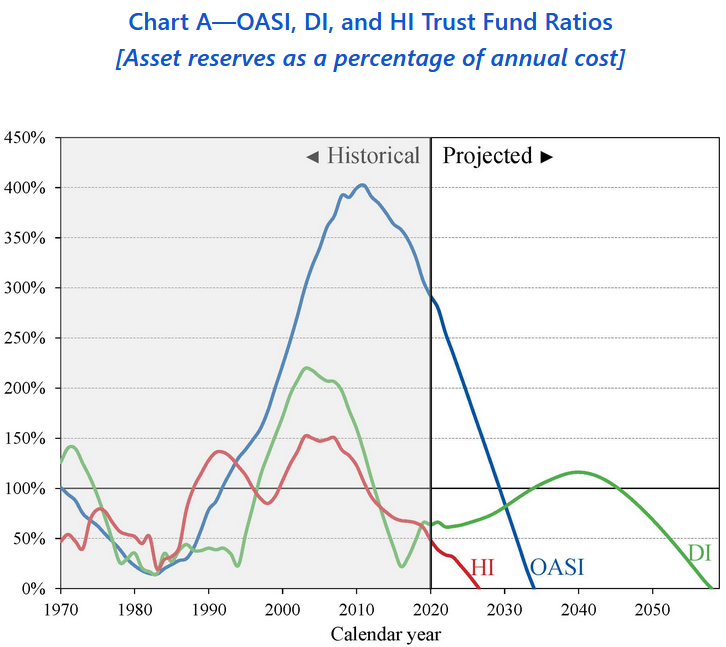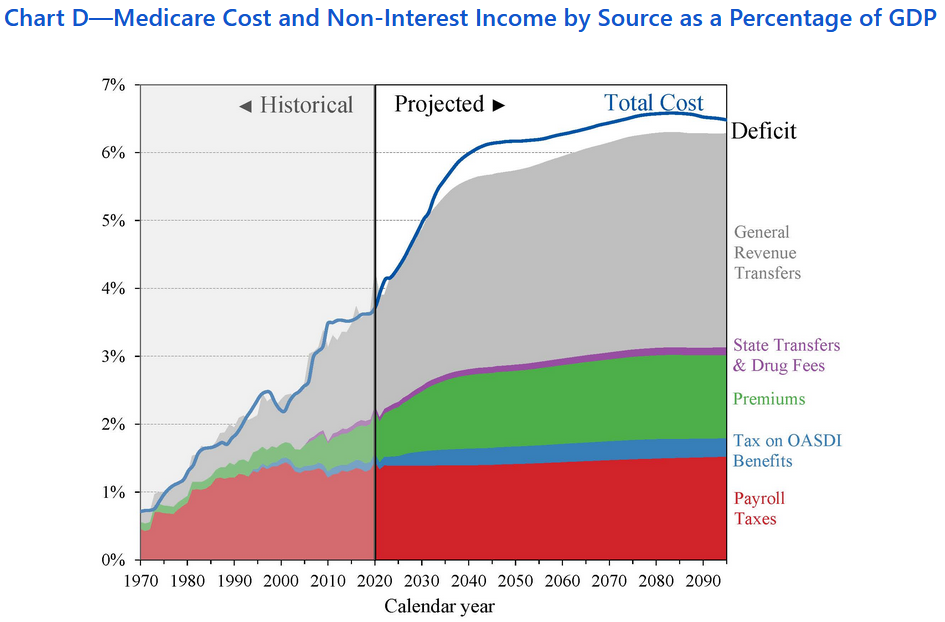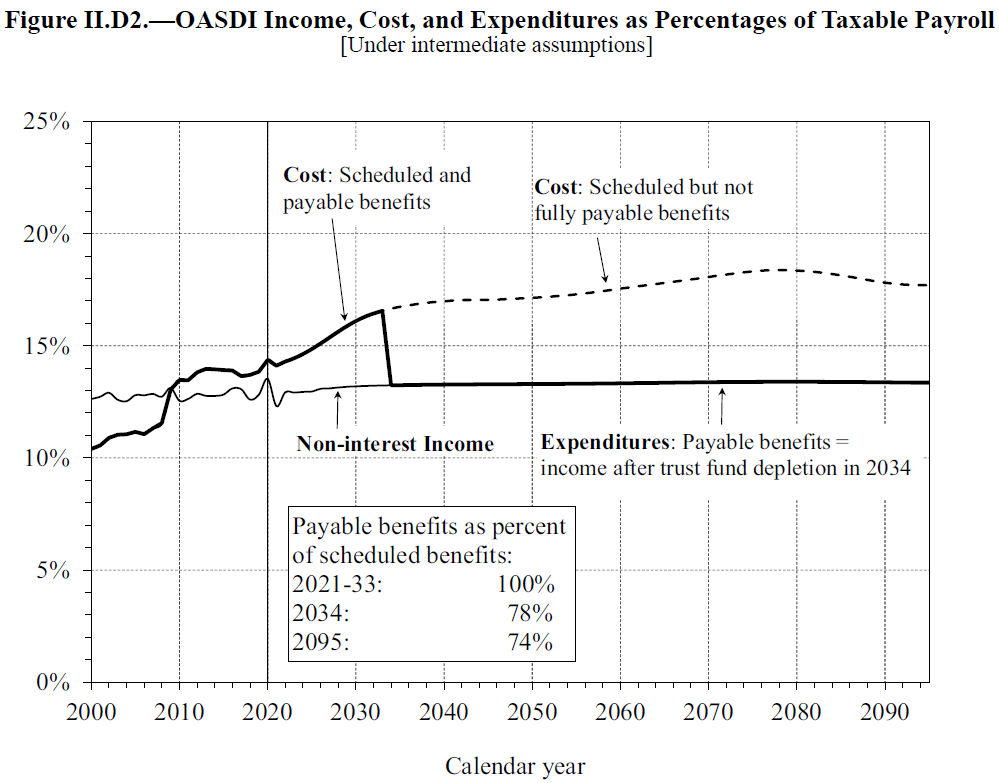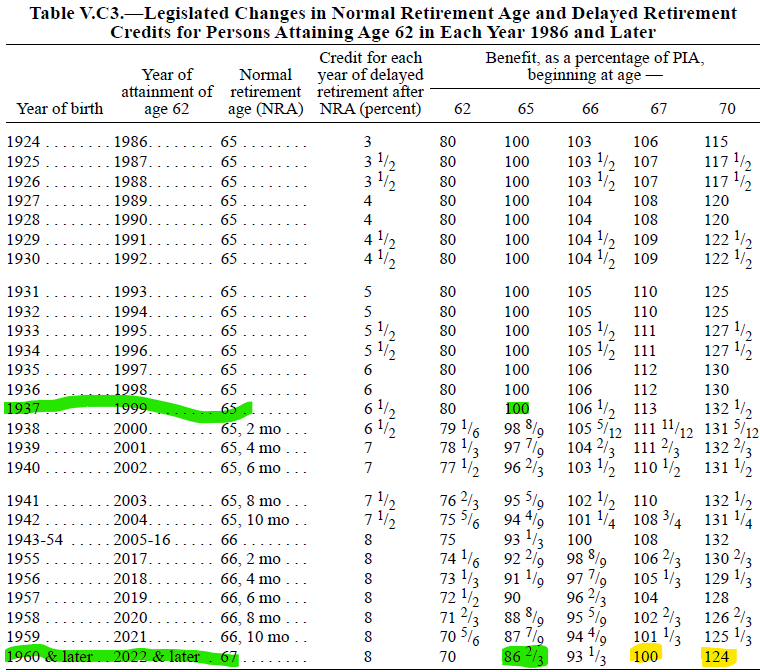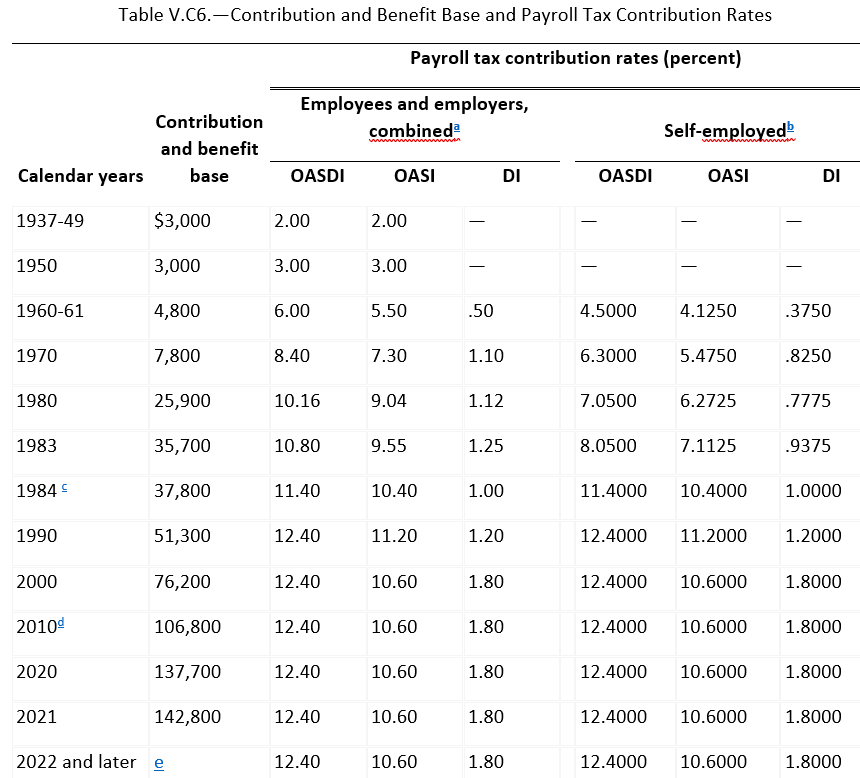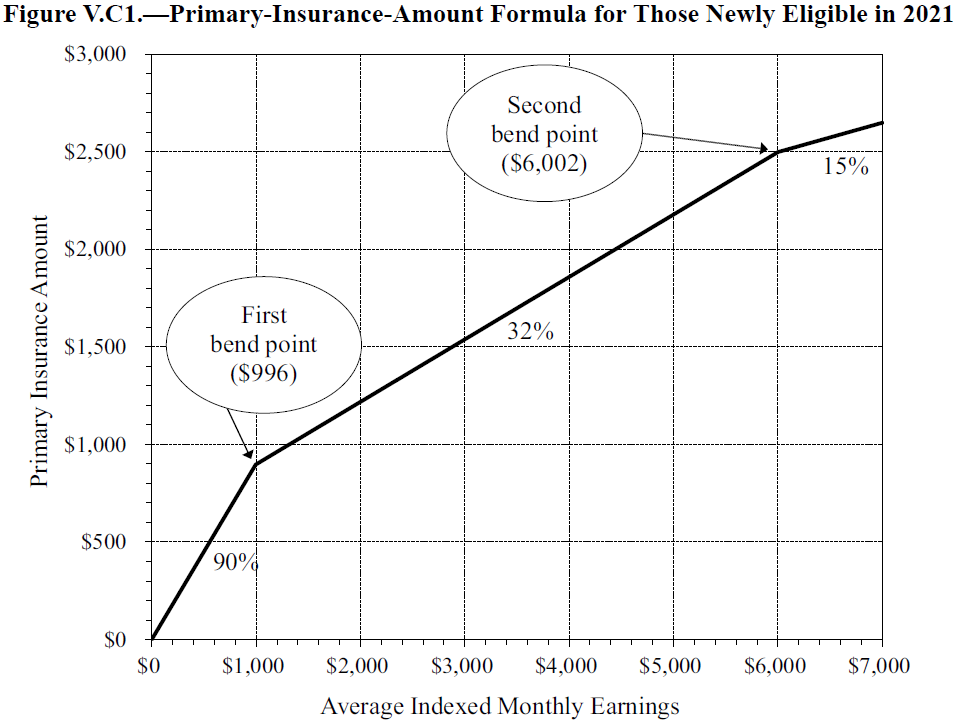
Are Social Security and Medicare Going to Last?
Social Security and Medicare are very important programs. Those currently receiving Social Security benefits appreciate the monthly income that grows with inflation and continues as long as they live. The Medicare program provides health coverage during potentially vulnerable times. But some people who haven’t started receiving benefits wonder if the programs will be around when they retire. The answer is yes, but their benefits may be reduced and/or additional taxes required. This post will provide a brief financial overview of these programs in a Q&A format.
Before I begin, there are two important documents I encourage you to become familiar with:
- Social Security Statement – available online at https://www.ssa.gov/myaccount/ - provides an estimate of your monthly benefit based on earnings history. Annual mailing of statements stopped in 2011 but some over age 60 may receive if not yet receiving benefits and not registered online.
- Annual Trustee Report – available online at https://www.ssa.gov/OACT/TRSUM/index.html - shows the financial health of both programs and future actuarial projections. The latest report was released August 31, 2021. Ok, this one might be in the weeds, but was the main source for this blog post.
What programs are included in Social Security and Medicare?
Social Security and Medicare are social insurance programs that provide benefits for individuals or family members for those workers who satisfy the number of years worked (and paid taxes) requirement. There are two programs under Social Security (SS) and two under Medicare, each with their own financial status. It is true the Social Security office will help individuals sign up for Medicare but it is a separate program.
For those wanting the financing summary, see the red font below. For those wanting more explanation with graphs, read on. You will note later it is common to express the financial health as simply two programs – Social Security (OASDI) and Medicare (Part A, B, D) despite the different funding.
- Old-Age and Survivors Insurance (OASI) – SS pays retirement and survivor benefits
- 100% covered to 2033, then 76% of benefits
- Disability Insurance (DI) – SS pays disability benefits
- 100% covered to 2057, then 91% of benefits
- NOTE: the combined OASDI is 100% covered to 2034, then 78% of benefits
- Hospital Insurance (HI) – Medicare Part A (covers inpatient hospital care)
- 100% covered to 2026, then 91% of benefits
- Supplemental Medical Insurance (SMI) – Medicare Part B (covers physicians, outpatient care) and Medicare Part D (covers prescription drugs)
- 100% foreseeable future, because they can just raise premiums and taxes
Who pays for Social Security and Medicare?
You do – either from payroll tax or general tax revenue. Current workers contribute a portion of their paycheck for the first three programs - sometimes called “payroll tax” or “FICA tax”. Your employer also pays the same tax; the self-employed pay the full 15.3%. The OASDI tax applies to income up to $142,800 (for 2021) but the 1.45% Medicare tax is paid on all income. There is an additional 0.9% Medicare tax for income above $200,000 for individuals and $250,000 for joint filers that started in 2013 to help fund part of Affordable Care Act (ACA or “Obamacare”). This is only paid by the employee. Also note the $200k and $250k is NOT indexed for inflation, catching more workers each year with wage inflation.
Medicare Part B and Part D is funded from two sources – about 75% comes from general revenue of our generous taxpayers and 25% comes from monthly premiums by retirees. That’s right – the monthly Medicare premiums only cover 25% of the true cost. Additional tiered premiums for Part B and D are required for high income retirees (above $88,000 for individual filers; $176,000 for joint filers).
Does each worker have their own account where the payroll taxes go until they retire?
No. Unlike your 401k account or savings account that is only for you, Social Security and Medicare Part A uses something called “pay-as-you-go funding”. This means the payroll taxes being collected by current workers is used to pay the bills for existing retirees. When the existing workers are retired, the next generation of workers will be paying their bills. Yes, the number of workers relative to the number of retirees changes over time and impacts the financing. The Social Security and Medicare actuaries project the expected financial impact on these changing demographics, but the tough part is convincing politicians and the public to make the tough choices now to assure long-term funding.
What happens to the extra payroll tax not needed to pay current benefits?
This is where the Trust Funds come in. Back when the payroll tax coming in was more than benefits going out, the excess was earmarked into Trust Funds and invested in Treasuries (at least on the books). Then later when the payroll tax revenue was lower than benefits going out (which has occurred since 2010) the difference was made up by the Trust Funds. Technically the Trust Funds are simply IOU’s from the government but that is a separate, complex topic (anyone remember Al Gore’s “lockbox” proposal… or at least the SNL skit?). It is the year these Trust Funds are projected to go to $0 and the % of promised benefits covered after that which summarizes the health of the programs.
So how soon will the Trust Funds hit $0? Then what happens?
Soon! The Old-Age and Survivor Trust Fund is projected to hit $0 in 2033 at which time only current payroll tax will be available to pay benefits (about 76% of promised benefits). The combined OASDI Trust Funds would hit $0 in 2034 and then cover about 78% of benefits. Medicare Hospital Insurance Trust Fund (Part A) is projected to run out in 2026 when current payroll tax is projected to cover about 91% of promised benefits. Where is the Trust Fund for Medicare Supplementary Medical Insurance (Part B and D) you ask? It is never projected to be depleted since financing the SMI is set to meet expected costs, again 25% from increasing Medicare premiums and 75% from taxpayer generosity.
How does Medicare funding work again?
Only the Hospital Insurance (Part A) is funded by payroll taxes (see red area in graph below). The Supplementary Medical Insurance (Part B and D) has about 25% funding from Medicare premiums (green area) and most of the other 75% from general taxing revenue – including the taxes on the Social Security benefits! That is why the Medicare premiums seem so reasonable. What is staggering is the projected cost as a % of GDP for the overall program – the majority coming from general tax revenue based on current law – not payroll taxes or dedicated premiums. The latest proposals out of Washington are looking to further expand Medicare coverage but some Senators are questioning the prudence of that when even the current promises can’t be covered.
So should I assume I will get nothing from Social Security?
No. You will very likely get less than currently promised but it won’t be $0. Remember Social Security is a pay-as-you-go system. After the Trust Funds are depleted you will still have current payroll tax coming in to pay benefits. The graphic below shows that while there won’t be enough funds to pay the current promises, it will be enough to pay 79% in the first year funds run out, then drifting down to 74% beyond 2095. In reality, it will likely be some combination of lower benefits and higher taxes to avoid this cliff, though the Wile E. Coyote moment is coming soon – Beep! Beep!
I’m in good health and my advisor keeps telling me to delay Social Security. My parents claimed SS at 65 so why shouldn’t I?
Because you are living longer and your benefit will be reduced by 13% for life if born in 1960 or later. Think of Social Security as an inflation-adjusted income payable for as long as you or your spouse are alive from a high-quality institution. For those born after 1960, delaying your benefit by just three years will increase this wonderful pension by 24%. Did I mention it also grows with inflation and is payable for life? Get some of that.
Can’t they just raise taxes to cover the shortfall?
Sure – just raise the OASDI payroll tax from 12.4% (6.2% x 2) to 15.8%, or an extra 3.4% of your income. This is the projection to cover the Social Security shortfall. But then you have to add on 2.9% Medicare tax and you are at 18.7% - almost one-fifth of payroll – to fund the ever-increasing benefits. The table below shows the historic OASDI rate since the program’s inception. It is important to recall the original intent of Social Security was to keep individuals out of poverty, not to provide full retirement income for most Americans. It is difficult to make changes when the impact is so far down the road, but the day of reckoning is upon us. Expanding benefits and related taxes is likely not the answer. Rather, a healthy debate about what % of your total income should be forced into a government program that provides a necessary safety net to keep people out of poverty and allow the remaining amount in the hands of the individual to keep and save as they see fit.
Can’t they just raise taxes on the high income earners?
It is important to realize both Social Security and Medicare are already doing this in a few ways.
- Social Security uses “bend points” on the benefit received. Everyone pays the same 6.2% on income but the amount of benefit paid is based on 90% of first $996 in monthly earnings, then 32% on income between $996 - $6,002, and finally 15% above. So the lower income workers are receiving a much higher % of their income as a benefit. Keeping with the “social” part of the program and lifting individuals out of poverty this make sense. But it should be recognized the benefit calculation is already quite progressive (see graph below).
- Social Security requires taxpayers with ‘base income’ in excess of thresholds to include up to 85% of their benefits as taxable income. Income thresholds begin at $25,000 for single filer; $32,000 for joint filers where 50% of benefits are included, with the full 85% kicking in a short distance above - $34k for single; $44k joint. Note these thresholds ARE NOT adjusted for inflation and have been the same since the passage of the 1983 Amendments to the Social Security Act which made Social Security benefits subject to tax. It is interesting to note $35,700 was the maximum wage limit for Social Security taxes in 1983. That wage limit on which taxes are collected is adjusted for inflation and today is $142,800. I bet there are many middle income beneficiaries that weren’t concerned about the new tax in 1983 given the high threshold level that now find themselves giving back part of their promised benefits through this tax. Also recall the extra 0.90% Medicare tax on income above $200k single and $250k joint is NOT indexed to inflation either.
- Medicare collects a higher monthly premium on high income beneficiaries. The first income threshold for higher monthly Medicare premium kicks in if Modified Adjusted Gross Income is above $88k for single and $176k for joint filers. There are many more tiers and higher premiums above that. See the latest thresholds and premiums on the Medicare website link here - https://www.medicare.gov/your-medicare-costs/part-b-costs}.
What changes to Social Security are being considered and what is the impact on funding?
There are different changes being considered to the Social Security program. A summary of the changes and the financial impact to the program is summarized by the Office of the Chief Actuary and can be found at here https://www.ssa.gov/OACT/solvency/provisions/index.html
Potential changes range from the type of cost-of-living adjustments to “bend point” changes to extending the retirement age to reflect longer life expectancy. It will likely require some combination of these changes in order to assure long-term financial stability. Note these are only Social Security changes, not Medicare.
If you are still with me I hope this was helpful. It is important to be aware of the issue to not only help plan your retirement (don’t assume $0 SS benefit!) but also to engage in a thoughtful, well-informed debate about the best path forward for these important yet financially troubled programs.
Posted by Kirk, a fee-only financial advisor who looks at your complete financial picture through the lens of a multi-disciplined, credentialed professional. www.pvwealthmgt.com



